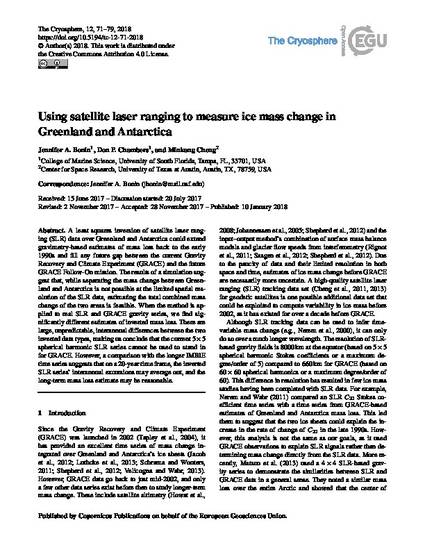
A least squares inversion of satellite laser ranging (SLR) data over Greenland and Antarctica could extend gravimetry-based estimates of mass loss back to the early 1990s and fill any future gap between the current Gravity Recovery and Climate Experiment (GRACE) and the future GRACE Follow-On mission. The results of a simulation suggest that, while separating the mass change between Greenland and Antarctica is not possible at the limited spatial resolution of the SLR data, estimating the total combined mass change of the two areas is feasible. When the method is applied to real SLR and GRACE gravity series, we find significantly different estimates of inverted mass loss. There are large, unpredictable, interannual differences between the two inverted data types, making us conclude that the current 5×5 spherical harmonic SLR series cannot be used to stand in for GRACE. However, a comparison with the longer IMBIE time series suggests that on a 20-year time frame, the inverted SLR series' interannual excursions may average out, and the long-term mass loss estimate may be reasonable.
The Cryosphere, v. 12, issue 1, p. 71-79
Available at: http://works.bepress.com/don_chambers/94/
